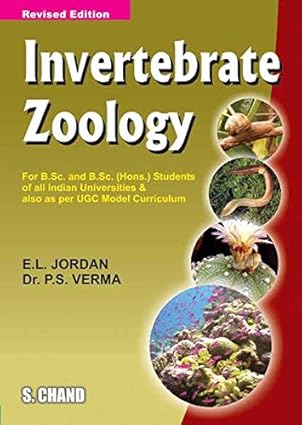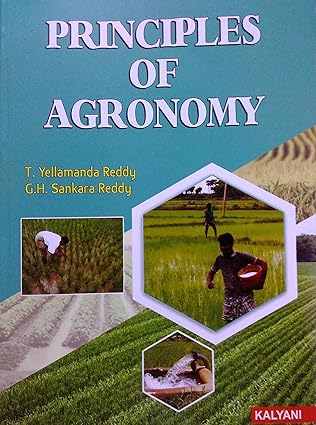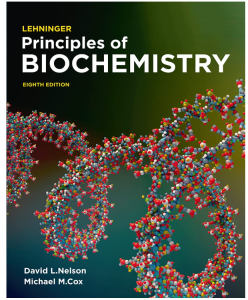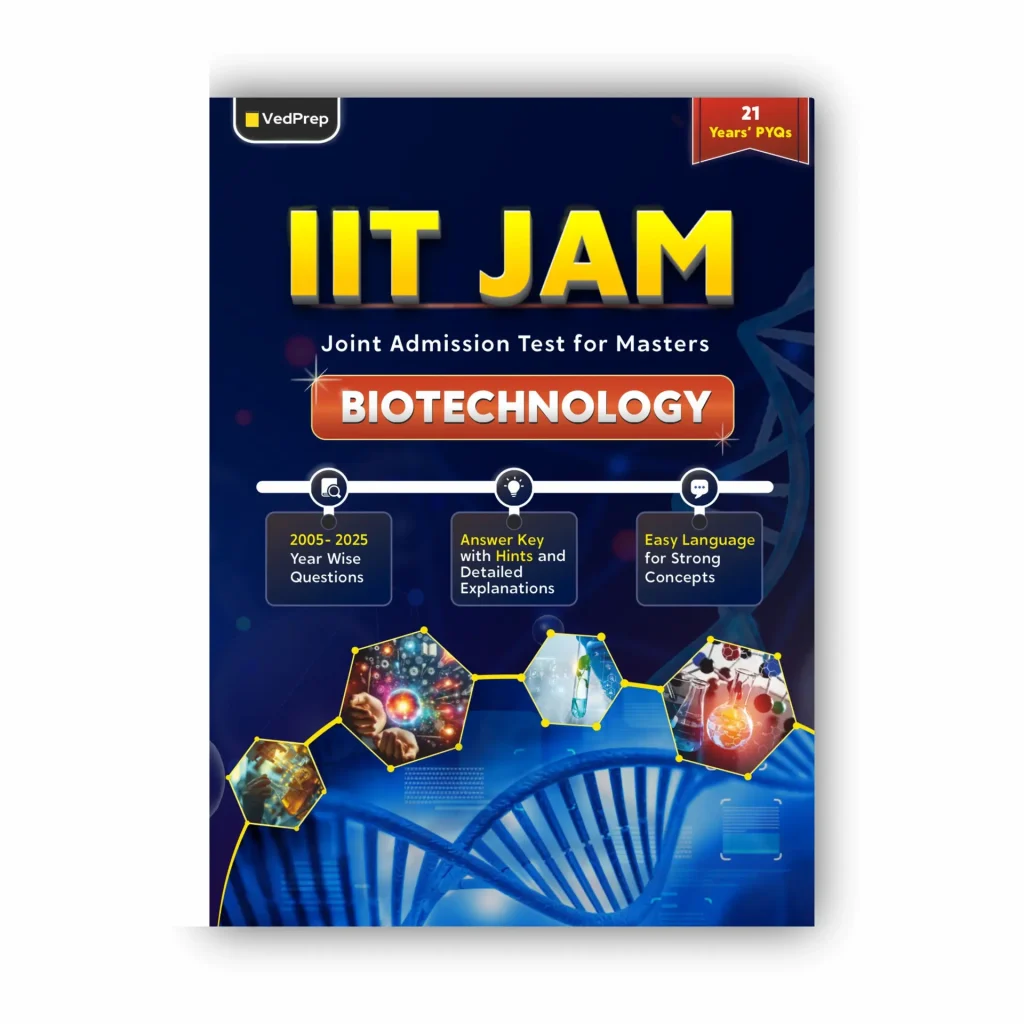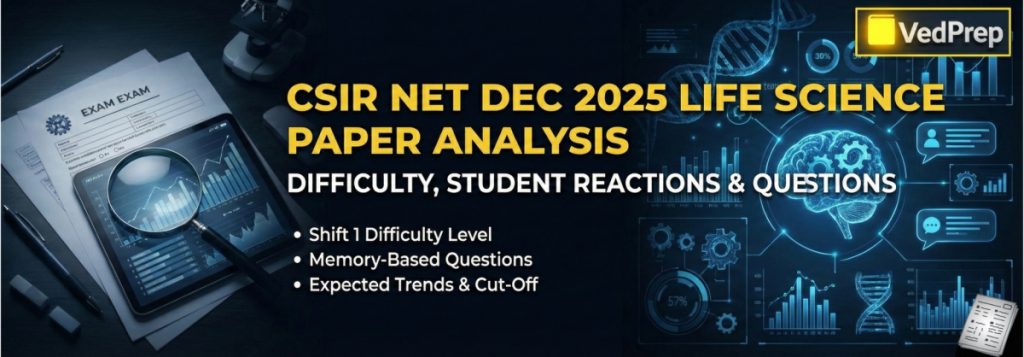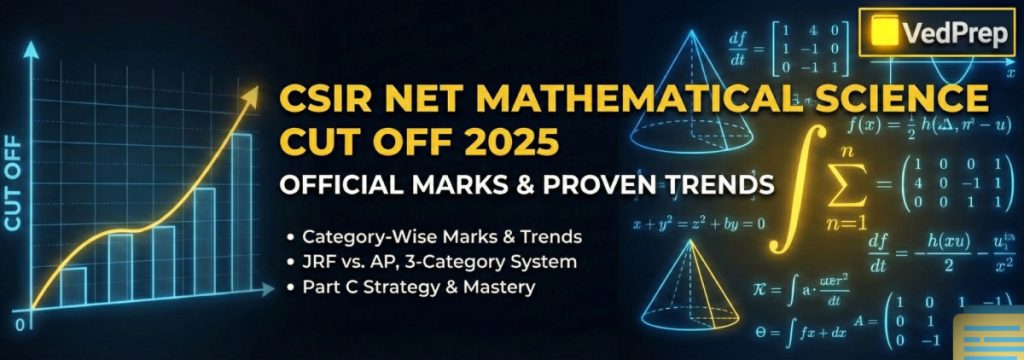CUET PG Exam Pattern 2026 to understand is essential for every aspirant, as it helps in planning an effective preparation strategy. The exam will be held in online mode (CBT) and will assess candidates on both domain-specific knowledge and general aptitude.
Common University Entrance Test for Postgraduate (CUET PG) 2026 will be conducted by the National Testing Agency (NTA) for admission to various postgraduate programmes offered by central, state, and participating universities across India.
CUET PG Exam Pattern 2025 Revised
Understanding the CUET PG exam pattern is the first step to start your exam preparation. The CUET PG 2026 examination is expected to be held in March 2026 in online mode across approximately 302 exam centres nationwide. Through this exam, candidates will be able to apply for admission to various postgraduate programmes such as MA, MSc, MCom, MFA, MTech, MBA, LLB, and BEd.
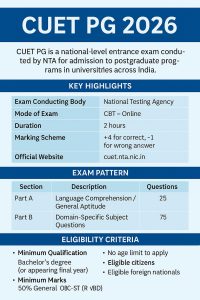
Each right answer will be awarded with four marks and one mark will be deducted for each wrong answer. The exam pattern has also been further reduced to 90 minutes. The total marks for the exam will be 300. Total 75 questions will be asked from the CUET PG 2025 syllabus. In this year’s exam pattern, you can choose the General Test paper as a separate subject. Additionally, you can also choose four paper codes instead of 20. To get more details regarding CUET PG Exam Pattern 2026, you can check the table below:
| CUET PG Exam Pattern 2026 | |
| Particulars | Details |
| CUET PG 2025 Conducting Body | National Testing Agency |
| Exam Mode | Online |
| Nature of Questions | Multiple Choice Questions |
| Total Questions | 75 |
| CUET PG 2025 Exam Duration | 90 minutes |
| CUET PG Total Marks | 300 |
| Marking Scheme | 4 marks for each correct response
1 mark deducted for each wrong answer |
| CUET PG Passing Marks | 45% |
Commonly Asked Questions
What is the exam pattern of CUET PG 2026?
Candidates frequently ask about the number of questions, marking scheme, duration, and subject sections.
Is CUET PG conducted in a single shift or multiple shifts?
Many aspirants search to understand if the exam is held shift-wise and whether normalization applies.
Watch this video for a deeper explanation.
CUET PG 2026 Life Sciences | Top 10 Most Asked Concepts | CUET PG 2026 Preparation
CUET PG 2026 Exam Pattern For Question Papers
Candidates need to review the CUET PG Exam Pattern 2025 along with their respective paper codes to know about the distribution of marks and questions for each paper.
| CUET PG 2025 Exam Pattern – For Question Papers | |
| Paper Code | Question Paper Pattern |
| PGQP01 | 75 questions related to language or verbal ability, domain-related knowledge questions related to technical ability, mathematics and science. |
| PGQP02 to PGQP07
PGQP09 to PGQP37 PGQP39 PGQP41 to PGQP59 PGQP61 to PGQ73 PGQP75 to PGQ77 |
75 questions related to language comprehension or verbal ability, Mathematical/quantitative ability and analytical skill and general knowledge. |
| PGQP08, PGQP74, PGQP78 | 75 questions related to language comprehension or verbal ability, Mathematical/quantitative ability and analytical skill and general knowledge. |
| PGQP60 | 75 questions related to general knowledge or awareness, Mathematical ability or Logical reasoning questions. |
| PGQP38 | 75 questions related to language comprehension, verbal ability, Mathematical ability, Data Interpretation and Logical Reasoning. |
| PGQP40 | 75 questions related to language comprehension, verbal ability, Mathematical ability, Computer Basics and Logical Reasoning. |
CUET PG 2026 Exam Pattern Marking Scheme
The marking scheme for CUET PG 2025 is the same as the previous year. The paper pattern of the exam helps all candidates comprehend the test. In this exam, each question will be of four marks. However, candidates should know that the exam follows a negative marking pattern where one mark is deducted for each wrong answer.Applicants need to check the following marking scheme:
| Feature | Details |
| Marks per Question | 4 marks |
| Correct Answer | +4 marks |
| Wrong Answer | -1 mark (negative marking) |
| Unanswered Question | 0 marks |
| Total Marks | 300 |
| Good Score | 650 or above |
| Excellent Score | 700 or above |
CUET PG 2026 Total Marks
According to the new exam format for CUET PG 2026 . The total number of questions has been streamlined to 75 MCQs under the new pattern for 2026, reducing from earlier higher counts.
| Feature | Details |
| Number of Questions per Paper | 75 |
| Marks per Question | 4 |
| Total Marks | 300 |
| Passing Marks (General) | 230–240 expected |
| Passing Marks (OBC) | 220–230 expected |
| Passing Marks (SC/ST) | 210–218
expected |
CUET PG Total Marks & Category-Wise Cutoffs (2023–2025)
| Year | Total Marks | General Category Cutoff | OBC Category Cutoff | SC Category Cutoff | ST Category Cutoff |
| 2023 | 300 | 230–240 | 220–230 | 210–218 | 200–210 |
| 2024 | 300 | 240–250 | 220–230 | 210–220 | 200–210 |
| 2025 | 300 | 230–245 | 220–230 | 210–220 | 200–210 |
Key Observations:
- General Category: The cutoff remained relatively stable, ranging between 230 and 250 across the three years.
- OBC Category: The cutoff ranged between 220 and 230, showing minor fluctuations.
- SC Category: The cutoff remained consistent between 210 and 220.
- ST Category: The cutoff showed slight variations, ranging from 200 to 210.
Analysis:
- The consistency in cutoff scores across these years indicates a stable admission process, with minimal changes in the number of applicants and available seats.
- However, slight variations can be attributed to factors such as the number of test-takers, seat availability, and changes in university-specific criteria.
CUET PG 2026 Subject-Wise Syllabus
To help aspirants plan their preparation effectively, here’s the detailed subject-wise syllabus for CUET PG 2026 organized by domains, making it easier to focus on your target course.
| Stream / Subject | Key Topics / Syllabus Areas |
| Zoology | Animal Diversity, Genetics, Evolution, Ecology, Physiology, Cell Biology, Biotechnology |
| Biochemistry | Biomolecules, Enzymes, Metabolism, Molecular Biology, Genetics, Biochemical Techniques |
| Chemistry | Physical Chemistry, Organic Chemistry, Inorganic Chemistry, Analytical Chemistry, Spectroscopy |
| Life Sciences | Cell Biology, Genetics, Ecology, Evolution, Physiology, Molecular Biology, Microbiology |
| Mathematics | Algebra, Calculus, Differential Equations, Linear Algebra, Probability, Statistics, Geometry |
| Data Science | Data Analysis, Probability, Statistics, Machine Learning Basics, Python / R Programming Concepts |
| Food Technology | Food Chemistry, Food Microbiology, Food Processing, Food Preservation, Nutrition |
| Plant Biotechnology | Plant Genetics, Molecular Biology, Tissue Culture, Biochemistry, Plant Physiology |
| Physics | Mechanics, Electricity & Magnetism, Thermodynamics, Quantum Mechanics, Optics, Modern Physics |
| Botany | Plant Anatomy, Plant Physiology, Genetics, Ecology, Molecular Biology, Biotechnology |
| Environmental Science | Ecology, Environmental Pollution, Natural Resources, Climate Change, Biodiversity, Sustainability |
| Horticulture | Plant Breeding, Plant Propagation, Soil Science, Pest Management, Crop Production |
| Forensic Science & Criminology | Crime Scene Investigation, Forensic Chemistry, Criminal Law, Fingerprinting, DNA Analysis |
| History | Ancient, Medieval, Modern Indian History, World History, Historiography, Research Methods |
| MA Social Work (MSW) | Social Work Theories, Human Behavior, Community Development, Research Methods, Social Policy |
| MBA | Management Principles, Accounting, Finance, Marketing, Human Resource Management, Business Law |
| MA (General) | Subject-specific topics depending on the chosen MA specialization |
| MTech | Core Engineering Subjects, Mathematics, Programming, Research Methodology, Domain-specific topics |
| MCA | Programming, Data Structures, Algorithms, Database Management, Computer Networks, Software Engineering |
| Languages | Grammar, Literature, Comprehension, Writing Skills, Language-specific topics |
| B.Ed Courses | Pedagogy, Educational Psychology, Teaching Methods, Curriculum Development, Evaluation Techniques |
| Microbiology | Microbial Diversity, Microbial Physiology, Genetics, Pathogenic Microbes, Immunology |
| Political Science | Political Theory, Comparative Politics, International Relations, Indian Constitution, Governance |
| LLB | Constitutional Law, Criminal Law, Civil Law, Legal Procedures, Legal Reasoning |
| Psychology | Cognitive Psychology, Developmental Psychology, Social Psychology, Research Methods, Psychological Testing |
| Mass Communication & Journalism | Media Studies, Communication Theories, Reporting, Editing, Advertising, Public Relations |
| Hindi | Grammar, Literature, Comprehension, Essay Writing, Language Skills |
| Agricultural Science | Agronomy, Soil Science, Plant Breeding, Horticulture, Animal Husbandry, Agricultural Economics |
| Sociology | Sociological Theory, Social Institutions, Social Change, Research Methods, Indian Society |
| TISS (All Subjects) | Subject-specific topics according to TISS programs, Social Work, Management, and Development Studies |
Reading is great, but seeing it in action is better — watch the video below!
CUET PG 2026 Full Guide | Syllabus, Pattern, Eligibility, Age Limit, Cut-Off, Strategy Explained!
CUET PG 2026 Domain-Wise Syllabus Download
To help aspirants plan their preparation effectively, ganized the CUET PG 2026 syllabus into six distinct domains. The table below provides a domain-wise breakdown of courses and their corresponding syllabus PDFs, making it easier to identify the subjects relevant to each domain.
Commonly Asked Questions
What type of questions are asked in CUET PG — conceptual or factual?
Students want to know difficulty level and whether the exam is memory-based or application-based.
CUET PG 2026 recommended books by subject/stream
To help aspirants prepare effectively, here’s a detailed list of CUET PG 2026 recommended books categorized by subject and stream, covering Science, Arts, and Professional courses.
1. General Preparation
| Topic | Recommended Books | Purpose |
| Reasoning & Aptitude | A Modern Approach to Verbal & Non-Verbal Reasoning – R.S. Aggarwal | Logical reasoning practice |
| Quantitative Aptitude | Quantitative Aptitude – R.S. Aggarwal | Numerical ability practice |
| General Knowledge & Current Affairs | Manorama Yearbook / Lucent GK | GK & Current Affairs coverage |
| English Language | High School English Grammar & Composition – Wren & Martin | Grammar, vocabulary, comprehension |
2. Science Stream
| Subject | Recommended Books | Purpose |
| Zoology | Textbook of Zoology – P.S. Verma | Animal diversity, physiology, genetics |
| Biochemistry | Lehninger Principles of Biochemistry – Nelson | Molecular biology, metabolism, biomolecules |
| Chemistry | Organic Chemistry – Morrison & Boyd; Physical Chemistry – P. Bahadur | Chemistry fundamentals and problem-solving |
| Physics | Concepts of Physics – H.C. Verma; Fundamentals of Physics – Halliday & Resnick | Core physics concepts |
| Mathematics | Higher Algebra – Hall & Knight; Engineering Mathematics – B.S. Grewal | Algebra, calculus, probability, statistics |
| Life Sciences | NCERT Life Sciences + Molecular Biology of the Cell – Alberts | Genetics, ecology, physiology |
| Botany | Plant Biology – Peter H. Raven; Botany Textbook – B.P. Pandey | Plant anatomy, physiology, ecology |
| Microbiology | Microbiology – Prescott; Microbial Genetics – Freifelder | Microbial physiology, genetics, immunology |
| Biotechnology | Biotechnology – P.K. Gupta | Recombinant DNA, molecular biology |
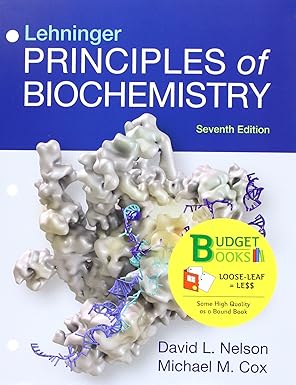
3. Arts & Humanities
| Subject | Recommended Books | Purpose |
| History | A Brief History of Modern India – Spectrum; NCERT History | Modern, Medieval, Ancient India |
| Political Science | Indian Government and Politics – Laxmikanth | Constitution, Governance, Political Theory |
| Sociology | Sociology: Themes and Perspectives – Haralambos | Social institutions, theory, research methods |
| Economics | Indian Economy – Ramesh Singh; NCERT | Micro & macroeconomics, development economics |
| Psychology | Introduction to Psychology – Morgan & King | Cognitive, developmental, social psychology |
| Languages (English/Hindi/Other) | NCERT + Standard Literature | Grammar, comprehension, literature |
4. Professional Courses
| Course | Recommended Books | Purpose |
| MBA | Principles of Management – Koontz & Weihrich; Marketing Management – Philip Kotler | Management, HR, Marketing, Finance |
| MCA | Data Structures & Algorithms – Tremblay & Sorenson; Programming in C/C++ – Reema Thareja | Programming, DBMS, Algorithms |
| MTech | Core Engineering Textbooks + Engineering Mathematics – B.S. Grewal | Domain-specific concepts |
| Social Work (MSW) | Social Work: An Introduction – G. Pawar | Social work principles, community development |
| Law (LLB/LLM) | Indian Constitutional Law – M. P. Jain | Constitutional law, legal reasoning, civil & criminal law |
| Mass Communication & Journalism | Mass Communication in India – Keval J. Kumar | Media studies, reporting, communication theory |
| Agricultural Science | Principles of Agronomy – T. S. Bhati | Crop production, soil science, horticulture |
Preparation Tips Using Books
- Start with NCERT & standard reference books for conceptual clarity.
- Solve previous years’ question papers for each subject.
- Make short notes for quick revision before exams.
- Use mock tests and sample papers to improve time management.
Also read – CUET PG Sanskrit Cut Off 2025 : Expected Marks, Trends, University Insights
Commonly Asked Questions
Does CUET PG have a separate section for General/Analytical Aptitude?
A common doubt is whether the question paper includes reasoning, quantitative aptitude, and English, or only subject-specific questions.
CUET PG Previous Year Question Papers
CUET PG Previous Years question papers are considered a great resource for all students preparing for the upcoming exam. After completing the CUET PG 2026 syllabus, aspirants preparing for the entrance test are required to practice CUET PG Previous Year Question Papers to gain a thorough understanding of the exam pattern as well as what type of questions are asked in the exam.
From Official Website (NTA CUET PG)
The official and safest source is the NTA CUET PG website.
Official Website:
https://pgcuet.samarth.ac.in/
or
https://nta.ac.in/
Steps:
- Visit the official website: https://pgcuet.samarth.ac.in/
- Scroll down and find “Previous Year Question Papers” or go to “Public Notice / Downloads” section.
- Click on “CUET PG 2024 Question Papers” link.
- Select your Subject Name (e.g., English, History, Political Science, Commerce, etc.).
- Download the PDF file for:
- Question Paper
- Answer Key
- Reading is great, but seeing it in action is better — watch the video below!CUET PG 2026 Full Guide | Syllabus, Pattern, Eligibility, Age Limit, Cut-Off, Strategy Explained!
CUET PG Exam Pattern 2026 FAQ
What is the revised CUET PG 2026 exam pattern?
The test is CBT (online), 75 MCQs, 90 minutes, 300 marks. +4 for each correct answer, –1 for each wrong answer, 0 for unattempted. Questions cover Domain Knowledge plus General Aptitude (as per paper code). You can also choose the General Test as a separate subject and select up to four paper codes.
How are marks calculated and what is a good score?
Each paper = 75 questions × 4 = 300 marks. +4/–1/0 marking applies. As a rough guide, many programmes consider 230–245 (General) competitive, with category-wise ranges varying by university; final cut-offs depend on subject, seats, and test difficulty.
Are calculators or rough sheets allowed? What should I carry?
Physical calculators, smart devices, and study materials are not allowed. You’ll get rough sheets at the centre and must return them. Carry your Admit Card, valid photo ID, and follow the Admit Card advisory for centre-specific rules.
Where can I download CUET PG Previous Year Question Papers (PYQs) and how should I use them?
Download PYQs and answer keys from the official NTA CUET PG portal (Public Notices/Downloads/Question Papers). Study plan: Finish ~80–90% syllabus,Solve one full paper in 90 minutes,Keep an error log and revise weak topics,Focus on frequently repeated areas, Recheck with official solutions for accuracy.








